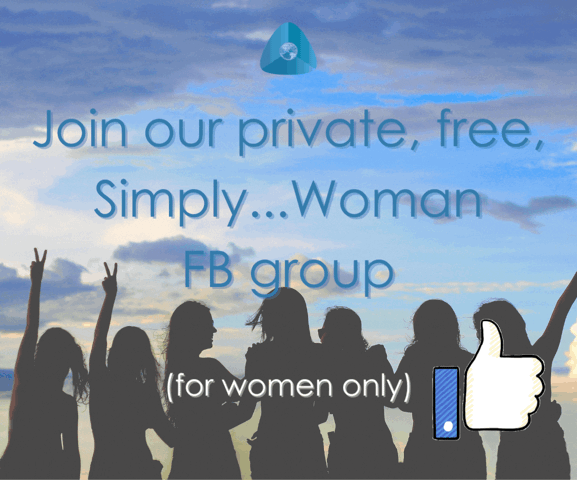- Mothering in a Fractured TimePosted 1 week ago
- Beneath the Surface: Revealing Life’s Goals nurtured from a Spiritual SeedPosted 2 weeks ago
- How We Kept Marital Peace while Traveling the World with Our KidsPosted 3 weeks ago
- How I Coped with Feeling Lost in a Changing SocietyPosted 3 weeks ago
- The Unexpected Liberation of a Butt DialPosted 2 months ago
- Why is France making abortion a constitutional right?Posted 2 months ago
Passive is the Opposite of Peaceful: In Praise of Rage

A friend of mine was struggling recently with shame and guilt over her anger. She had thought that someone’s words were harmful, and tried to express that she was upset. Right away, she was branded as the “outraged woman” who couldn’t be taken seriously, and she began to question why she couldn’t be above feeling angry so that people would hear her point. Why couldn’t she be loving and peaceful, rather than ruining the validity of her point with anger?
I’ve had these conversations countless times. Especially in discussions about violence and injustice on a wider scale, people often put forth what seems to have become a commonly accepted false equivalency about anger. It usually goes something like this:
“Well, sure there is some horrible stuff going on, but you can’t fight hate with hate!”
“Yeah, I definitely agree that there’s an issue with male violence, but angry feminists are damaging the cause – it’s better to respond with love!”
“Yes there are huge problems with racism, but these furious activists yelling at people doesn’t solve anything!”
The comparison that’s being made here – that “both sides are just as bad” -contains within it an implicit judgment of anger. It also reveals a misunderstanding of the nuances of different forms and uses of anger, lumping all rage together in one category that is seen as inherently negative and even potentially dangerous. North America has a particularly dysfunctional cultural view of anger, influenced by everything from a deeply rooted puritanism to pop spirituality and the cult of “positivity”. We see anger as a fire that will consume everything it touches, and we’re encouraged to be constantly vigilant and put out the flame as soon as we see it. We call it unenlightened, shaming people for not being above feeling angry, or we call it unhealthy, scaring people into believing that anger somehow instantly makes us sick.
The message is clear: anger is to be tamed and avoided – it’s “bad”. And if anger is “bad”, then any expression of anger will seem to taint the reason for it, no matter how justified that reason may be.
Let’s be real here: anger is a factor in much of the violence that we see in the world around us. Mass shooters, who are disproportionately white males, are frequently motivated by a simmering resentment – what author Michael Kimmel refers to as “aggrieved entitlement” in his book Angry White Men. Men who relentlessly troll and intimidate women often feel that this is some vindication for feminism taking power away from them. Torch-bearing white supremacists – men and women alike – rage over having to share power when they’d always taken for granted that power would only ever belong to them. It’s true that all of these people have anger in common: they harbour a long-burning fury at not being given what they feel the world owes them. And it’s true that anger can be harmful: when unchecked and unexamined, it can be a force used purely for death and destruction, like in these examples.
But let’s not pretend that the anger of those who bear the weight of injustice is somehow equivalent to the anger of those who perpetuate it. If anything, they are opposites – one ultimately leads to harm, while the other can be a potent tool of healing and rebirth.
To deny everyone their anger because we’re afraid of it is to deny progress and growth. To put out the tiniest spark of rage under the guise of wanting everyone to “just come together and get along” is to confuse being passive with being peaceful. To accept only watered down fury is to create a world where apathy is preferable to action.
And deep down, I think that’s a big part of why we do this.
We’re a culture that appears on the surface to be preoccupied with change, progress, and seeking out new horizons – but we don’t need to dig very deep to see that our pursuit of change is often superficial. We like the idea of change, but not the work required. We like change that doesn’t require us to do much or look at ourselves too closely to attain and sustain it. And ultimately, that’s what dismantling any type of unjust system will demand of us: deeply personal inner work that will make us question our world and the role we play in it. Anger that’s channeled and expressed consciously has the power to turn our world and ourselves upside down, and that scares the shit out of us.
Because even if we’re the ones suffering from some form of injustice, change won’t be easy on us. The eventual end result might be wonderful, but the long process of getting there definitely won’t always be that way. There are consequences to justified anger, there are consequences to challenging a system, and there are consequences to disrupting our lives. And I know all too well that it can feel much easier to tell ourselves we’re “taking the high road” by not reacting and not speaking out. I know it often feels safer to put out the fire of our anger before anyone sees the smoke.
The truth is, we’ve been intentionally conditioned this way. Particularly as women, we’ve long been taught that our anger is wild and uncivilized – something to be squashed and tamed. We’ve been taught that it’s better to be likable than to be whole, and that it’s more noble to surrender and apologize than to stand firm and demand change. This is by design. It’s no coincidence that the groups who have historically been the most marginalized are also those whose anger has been the most vilified. It’s not an accident that the anger of women – and especially women of colour – is demonized in tropes like the “feminazi”, the “angry black woman”, the “man-hater”, or the “witch”, making us seem crazy and dangerous.
After all, women’s anger is dangerous. Channeled with the right intent at the right moment, it has the potential to turn an unjust system to ashes. And in a way, this is scary for us too, because it will also burn down so much of our own lives. Beliefs, structures, and paradigms that we’ve internalized very deeply will have to be uprooted. We will have to see all the ways we’ve kept ourselves small and docile because it was safer. We will have to see all the ways our unexamined beliefs have made us hold back other women. We will have to see all the ways we convinced ourselves that not taking a stand was some kind of peaceful neutrality. This will be a long journey.
Let our first step be finding our reverence for rage. The fire of anger can purify and bring clarity. It’s a potent messenger, showing us where our boundaries are being crossed, what can’t be tolerated any longer, and what needs to change. And it does more than just reveal where change is needed: it also gives us the fuel we need to make that change a reality. It sustains us as we tear down the old and outdated and create the new. And it’s an essential step on the stairway to our genuine power and self-expression.
May anger be welcomed back into our lives as a sacred tool, and may it forever remind us that passive is the opposite of peaceful.
********
 A women’s empowerment coach and teacher trained in expressive arts therapy and dance, Stacey Chantal Tsourounis has spent years studying across the globe. Her powerful writing explores the themes of truth and transformation and was recently published in the new Simply..Woman book. She loves performing as a dancer around her hometown of Toronto, reading Tom Robbins novels, and getting kisses from her dog, Marley. She can be found online at www.staceychantal.com.
A women’s empowerment coach and teacher trained in expressive arts therapy and dance, Stacey Chantal Tsourounis has spent years studying across the globe. Her powerful writing explores the themes of truth and transformation and was recently published in the new Simply..Woman book. She loves performing as a dancer around her hometown of Toronto, reading Tom Robbins novels, and getting kisses from her dog, Marley. She can be found online at www.staceychantal.com.







